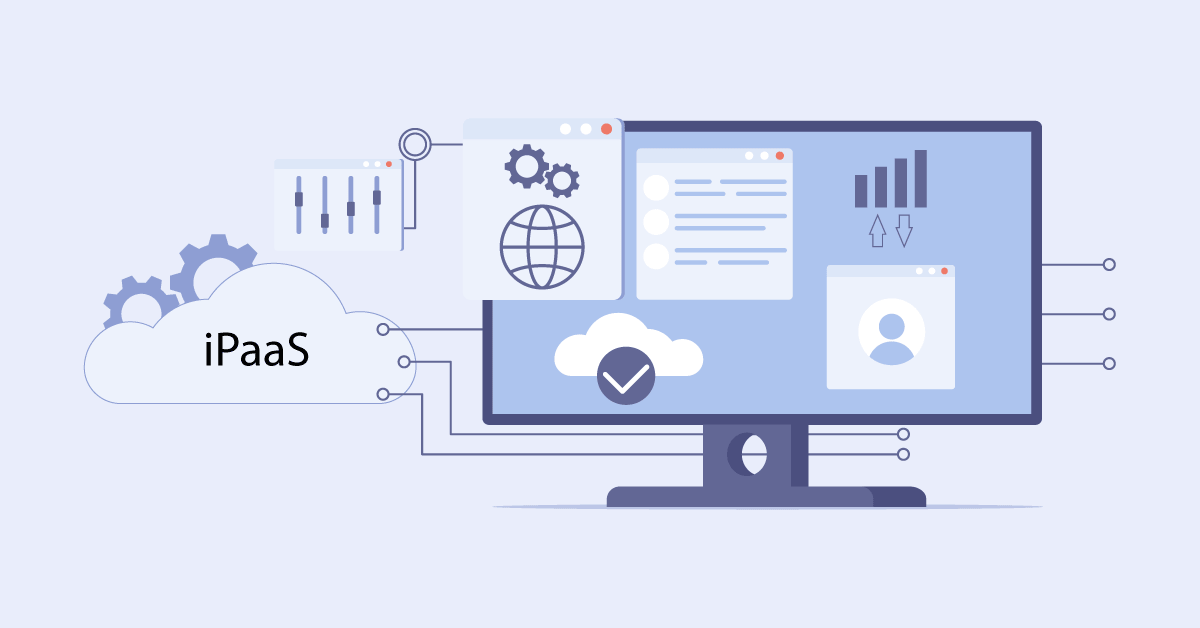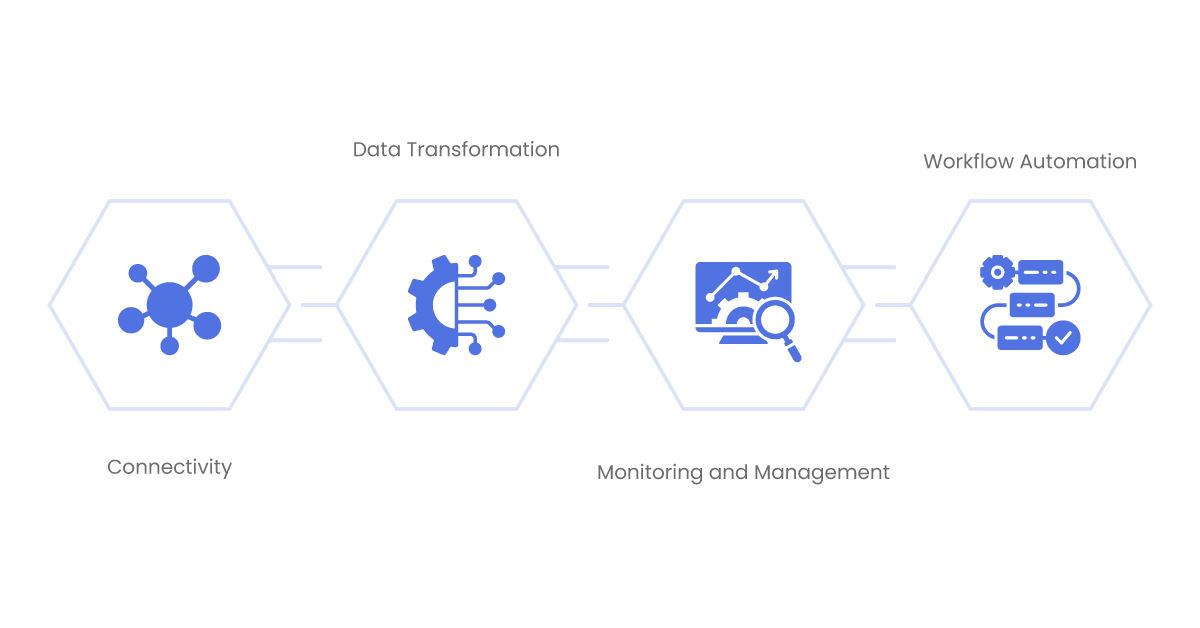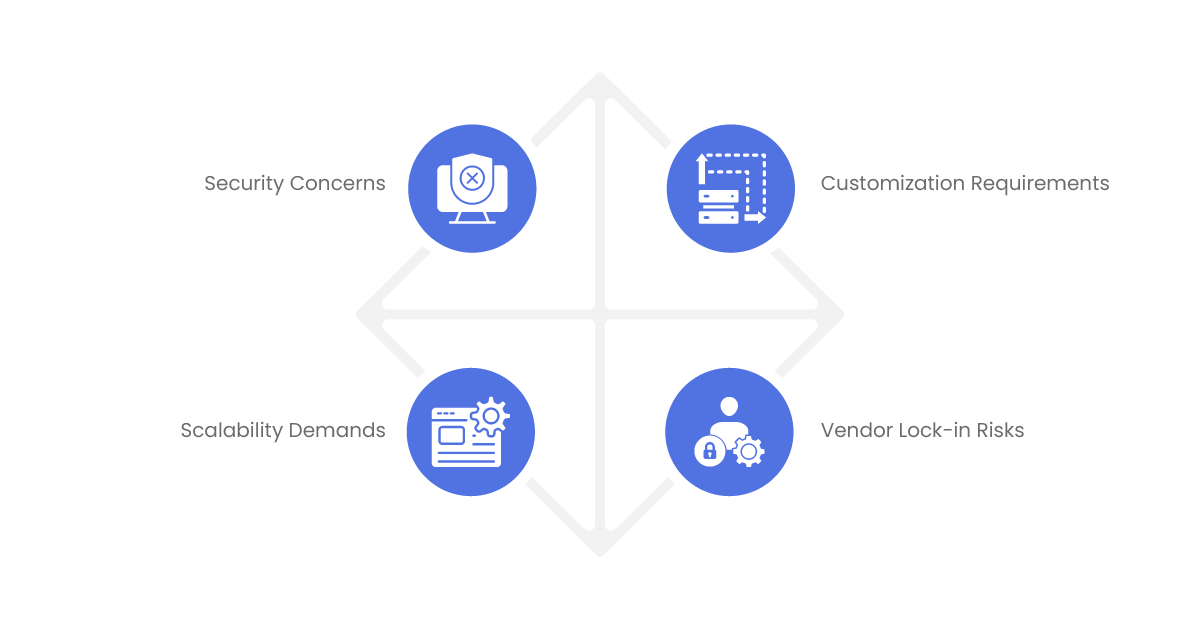Hybrid IT environments have become the norm in today’s business landscape, where organizations operate across a mix of on-premises infrastructure, private cloud, and public cloud services. Managing these diverse systems efficiently is crucial for maintaining productivity and staying competitive. This is where Integration Platform as a Service (iPaaS) comes into play. iPaaS is a cloud-based platform that facilitates the integration of various applications, data sources, and systems across different environments, enabling seamless communication and workflow automation.
Aonflow iPaaS – Free for First 3 Months!
Build and run up to 1,500 transactions monthly with no cost. No payment info needed!
Why iPaaS Matters in Hybrid IT Environments
In hybrid IT environments, where businesses operate across a blend of on-premises infrastructure and cloud services, the challenge of integrating disparate systems and applications looms large. Traditional integration methods, like point-to-point connections and bespoke coding, can quickly spiral into a labyrinth of complexity, fraught with maintenance headaches and ballooning costs.
Imagine a scenario where each new application or system added to your IT ecosystem requires painstaking custom development to ensure compatibility and communication with existing infrastructure. Not only does this approach demand substantial time and resources, but it also introduces a tangled web of dependencies that becomes increasingly difficult to manage as your IT landscape expands.
This is where Integration Platform as a Service (iPaaS) steps in as a game-changer. iPaaS offers a cohesive and simplified solution to the integration conundrum by providing a centralized platform for connecting and coordinating data and processes across diverse on-premises and cloud environments.
With iPaaS, organizations can bid farewell to the days of labor-intensive point-to-point connections and convoluted custom code. Instead, they gain access to a unified framework that streamlines the integration process, empowering them to effortlessly orchestrate communication between disparate systems and applications.
By leveraging iPaaS, businesses can transcend the constraints of their hybrid IT environments, seamlessly bridging the gap between on-premises infrastructure and cloud services. Whether it’s synchronizing data between legacy systems and modern applications or automating workflows across distributed environments, iPaaS offers a flexible and scalable solution tailored to the complexities of today’s IT landscape.
Key Features of iPaaS
- Connectivity: iPaaS offers a wide range of connectors and adapters that facilitate seamless integration with various systems, including SaaS applications, databases, and legacy systems. These connectors simplify the process of data exchange and enable real-time communication between different platforms.
- Data Transformation: iPaaS platforms come equipped with tools for data mapping, transformation, and cleansing. This allows organizations to standardize data formats, reconcile discrepancies, and ensure data consistency across disparate systems.
- Workflow Automation: iPaaS enables the creation of automated workflows that streamline business processes and eliminate manual intervention. By automating repetitive tasks such as data synchronization, file transfers, and event triggering, organizations can improve efficiency and reduce operational costs.
- Monitoring and Management: iPaaS platforms provide monitoring dashboards and management consoles that give visibility into integration processes and performance metrics. This allows IT teams to identify issues proactively, optimize workflows, and ensure service reliability.
Aonflow is the leading integration platform.
You can kick-start by integrating your first-ever workflow in just a matter of minutes.
Use Cases of iPaaS in Hybrid Environments
1. Application Integration: In hybrid IT environments, application integration stands as a paramount challenge. iPaaS serves as a beacon of hope in this landscape, offering a seamless bridge between cloud-based applications, on-premises systems, and third-party services. Take, for instance, the scenario where an organization aims to synchronize customer data between its CRM software and marketing automation tools. With iPaaS at the helm, this integration becomes a breeze, facilitating the automation of lead management processes and ensuring a unified customer experience across platforms.
2. Data Synchronization: The importance of data synchronization cannot be overstated in today’s data-driven world. iPaaS emerges as a potent ally in this domain, facilitating seamless data synchronization between databases, data warehouses, and analytics platforms. Picture an organization seeking to aggregate data from diverse sources for real-time analysis and actionable insights. iPaaS steps in to orchestrate this synchronization effortlessly, empowering informed decision-making and driving business agility in the face of dynamic market conditions.
3. E-commerce Integration: In the bustling realm of e-commerce, where customer expectations run high and competition is fierce, integration is key to success. iPaaS proves its mettle once again by seamlessly integrating online storefronts with back-end systems such as inventory management, order processing, and payment gateways. Consider a scenario where an e-commerce retailer strives to deliver a seamless shopping experience to its customers. By leveraging iPaaS, the retailer can ensure efficient order fulfillment, streamline inventory management, and orchestrate a cohesive shopping journey that leaves customers coming back for more.
4. IoT Integration: With the proliferation of Internet of Things (IoT) devices, organizations are presented with a wealth of opportunities to harness data for strategic insights and operational optimization. iPaaS emerges as a linchpin in the integration of IoT data with business applications and analytics platforms. Imagine a scenario where a manufacturing facility seeks to leverage IoT sensors for predictive maintenance and process optimization. iPaaS steps in to seamlessly integrate sensor data with relevant business systems, enabling proactive maintenance strategies, optimizing asset utilization, and driving operational efficiency to new heights.
In each of these use cases, iPaaS serves as a versatile and indispensable tool for navigating the complexities of hybrid IT environments. By facilitating seamless integration across disparate systems and applications, iPaaS empowers organizations to unlock new opportunities, drive innovation, and stay ahead of the curve in today’s dynamic business landscape.
Challenges and Considerations
While Integration Platform as a Service (iPaaS) offers a plethora of benefits for hybrid IT environments, it’s crucial to navigate through some key challenges and considerations:
1. Security Concerns: Security emerges as a paramount concern when integrating systems across diverse environments. Organizations must prioritize data security by ensuring that sensitive information is encrypted both during transit and at rest. Additionally, robust access controls should be implemented to prevent unauthorized access to critical data and systems. Vigilance in maintaining compliance with industry regulations and standards is paramount to safeguarding sensitive information against potential breaches.
2. Scalability Demands: As business needs evolve and data volumes grow exponentially, the scalability of iPaaS solutions becomes a critical factor. Organizations must select a platform that can scale seamlessly to accommodate the increasing demands without compromising performance. Scalability isn’t just about handling growing data volumes but also about catering to fluctuating transactional loads and ensuring consistent service delivery even during peak periods.
3. Customization Requirements: While iPaaS platforms offer an array of pre-built connectors and templates, there may arise scenarios where custom integration logic is necessary to meet specific business requirements. Organizations should carefully evaluate the platform’s flexibility and extensibility to accommodate bespoke integration needs. The ability to customize integration workflows and adapt to evolving business processes is essential for maximizing the value derived from iPaaS solutions.
4. Vendor Lock-in Risks: Adopting a particular iPaaS solution may inadvertently lead to vendor lock-in, wherein organizations become overly reliant on a single provider for integration capabilities. To mitigate this risk, it’s essential to assess the portability of integration workflows and data. Organizations should seek interoperable solutions that allow for seamless migration of integration assets across different platforms or providers. By maintaining flexibility and avoiding vendor lock-in, organizations can retain control over their integration strategy and adapt to changing business needs with agility.
Navigating these challenges and considerations requires a strategic approach and careful evaluation of both technical capabilities and business requirements. By addressing security concerns, ensuring scalability, accommodating customization needs, and mitigating vendor lock-in risks, organizations can harness the full potential of iPaaS to drive innovation, streamline operations, and achieve their digital transformation goals in hybrid IT environments.
Conclusion
In today’s hybrid IT environments, seamless integration is essential for driving business agility, innovation, and competitive advantage. iPaaS offers a robust solution for connecting disparate systems and applications across on-premises and cloud environments, enabling organizations to streamline workflows, automate processes, and leverage data for strategic insights. By understanding the key features, use cases, and challenges of iPaaS, organizations can harness their full potential to unlock new opportunities and achieve their digital transformation goals.
Aonflow iPaaS – Free for First 3 Months!
Build and run up to 1,500 transactions monthly with no cost. No payment info needed!


